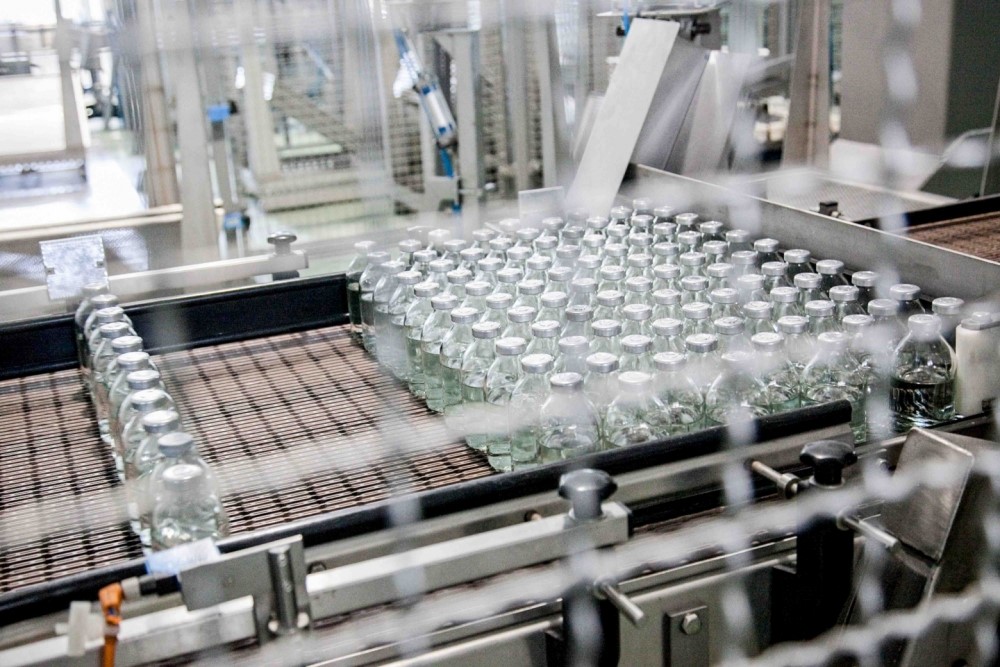Author: Tausif Bordoloi
This blog was originally published by the Manchester Institute of Innovation Research on 27 July 2020.
The race to develop an effective COVID-19 vaccine is on. Governments, firms and universities have fast-tracked vaccine development efforts, pouring millions of dollars into R&D. Around the world, 23 candidate vaccines are currently in various stages of clinical evaluation. Yet defeating COVID-19 will require more than R&D; it will need massive numbers of doses to build immunity. In the words of Dr Anthony Fauci, the public health expert leading America’s COVID-19 response, “We’re going to need vaccines for the entire world. Billions and billions of doses”. So, if a coronavirus vaccine arrives, what will it take to make enough doses?
Large-scale collaborative efforts using digital capabilities
Strategic collaborations will be essential to scale up COVID-19 vaccine production. This is because there is not enough capacity for a single or a handful of firms to make all of the candidates in development. By drawing on their individual strengths, manufacturers can accelerate production and reduce process bottlenecks. Recently, several firms have signed manufacturing tie-ups to help secure COVID-19 vaccine capacity. For instance, Oxford University’s vaccine candidate (now licensed to AstraZeneca) will be manufactured by a total of seven manufacturing partners, three of which are in the U.K., the others located in Europe, China and India. One of these partners, Catalent, based in New Jersey, U.S., will produce “hundreds of millions of doses” of this vaccine at its 305,000-square-foot facility in Anagni, Italy. Similarly, Codagenix, a U.S.-based clinical-stage biotechnology company recently announced a collaboration with Serum Institute of India to co-develop and mass produce a COVID-19 vaccine.
Yet success of these and similar other collaborations will depend on how efficiently partners can share data and coordinate their operations. This is more so because modern manufacturing is characterised by innumerable machines, built with multi-vendor components. Collaborators can therefore be challenged by complexities arising from such heterogeneous environments. Additionally, there is also the imperative of engaging firms in logistically, difficult-to-reach locations to ensure equitable access to vaccines. New digital capabilities offer avenues to address some of these issues. For example, data collected from vaccine production processes (using sensors) may be shared real-time among geographically distributed partners to derive insights and optimise operations. A number of vaccine manufacturers (Sanofi and GSK) and service providers (Catalent) have already integrated data-centric capabilities into their operations. But such capabilities also open doors to cyberattacks. Recently, Russian hackers allegedly tried to steal COVID-19 vaccine-related research data from U.K., U.S. and Canadian organisations.
Enter technical standards
This is where “technical standards” come in with the potential to tie up all the disparate ends. Standards are specifications that “define communication protocols, data formats, linkages within and across systems, interfaces between software applications and between hardware devices, and much more.” In other words, standards are common guidelines that enable manufacturers to “exchange and readily use information – securely, effectively, and with little or no inconvenience to the user.” Standards help unify practice with regard to some technical activity through a precise description of that activity. By adhering to a consensus-built approach, uniformity of practices is improved, and cyberattack vulnerabilities are decreased. According to the World Health Organization, incorporating standardised data capture in immunisation supply chain and logistics systems “will reduce long-term overhead costs and data errors, resulting in better data quality, analysis and decision-making”.
In the general digital manufacturing arena, various public and private stakeholders are currently involved in providing guidance to develop standards. In particular, Germany’s Plattform Industrie 4.0, a collective group of German policymakers, industry associations, large manufacturers and small- and medium-sized firms, has developed a framework called the Reference Architecture Model for Industrie 4.0 (RAMI 4.0). The aims of this framework are to identify existing standards and then determine if there is any need for modifications. By allowing the mapping of important aspects of digital manufacturing systems, RAMI 4.0 aims to ensure that “all participants involved share a common perspective and develop a common understanding.” Similarly, the Industrial Internet Consortium, a U.S. headquartered open membership organisation, has proposed the Industrial Internet Reference Architecture (IIRA) framework for the purpose of defining specific standards for interconnected industrial systems. The IIRA embodies the viewpoints of different stakeholders in the design and deployment of these systems.
But there are questions
While these efforts look promising in the context of future collaborations, development of standards is fraught with challenges. Some standards could create exclusion where they are not openly shared for others to use. There are numerous examples of failed and abandoned standards because they were redundant or too expensive to implement. Hence, important questions must first be addressed. Does a specific manufacturing operation need a new technical standard? Not all systems and processes will need a new standard – existing specifications might be adequate in such cases. Where more inclusive (open) and better standards are required, we need to ask how they will be developed and adopted. Then, what are some of the potential impacts of new technical standards on digital manufacturing in general? What lessons can be learnt from the ongoing pandemic to inform standards design/repurposing and adoption?
My doctoral research aims to address some of these questions, particularly in the context of adoption of digital technologies (such as additive manufacturing, machine learning and collaborative robots) in the U.K. Standards will probably have an important role to play in the successful adoption and integration of these technologies into plants. Interestingly, although it is argued that digital manufacturing technologies enabled by standards allow for greater innovation and collaboration among a wide range of manufacturers, regardless of size or location, such postulations may not necessarily be true. Existing empirical research tells us that standards can hamper firms’ ability to innovate under certain conditions.
Final thoughts
COVID-19 has arrived at a defining moment in manufacturing, when digital advances of the past two decades have made it possible for firms in different geographies to come together like never before. For COVID-19, vaccine manufacturers will likely face increased pressures – higher demand, flexible lot sizes, sudden plant closures due to outbreaks. Consequently, digital technology vendors, pharmaceutical firms and contract manufacturers may be forced to develop new or repurpose existing solutions quickly in order to meet immediate requirements. Such approaches, while necessary, could lead to a lack of uniformity across similar protocols and formats, complicating broader security, utility and adoption issues.
This coronavirus is the first major pandemic to arise in the last 40 years, but chances are it will not be the last. It is necessary to stress that even if the current pandemic were to end, collaborative manufacturing efforts should continue till all vaccine candidates could be stockpiled and ready for countering any future outbreak. So, it will be critical to engage with a wide range of stakeholders and understand what constitutes a successful outcome of their vaccine manufacturing efforts. These insights will then have to be taken into account to design and develop standards that do not yet exist or are insufficient to meet the unique challenges presented by newer technologies and evolving situations.
 Tausif Bordoloi is a PhD researcher in Science, Technology & Innovation Policy at the Manchester Institute of Innovation Research, Alliance Manchester Business School, The University of Manchester. His research interests are technology adoption and policy in the context of digital manufacturing. Tausif has an MBA (graduated with distinction) from the University of Exeter Business School and previously held strategy and finance roles in biotechnology and automotive firms.
Tausif Bordoloi is a PhD researcher in Science, Technology & Innovation Policy at the Manchester Institute of Innovation Research, Alliance Manchester Business School, The University of Manchester. His research interests are technology adoption and policy in the context of digital manufacturing. Tausif has an MBA (graduated with distinction) from the University of Exeter Business School and previously held strategy and finance roles in biotechnology and automotive firms.
An earlier version of this blog was prepared for BMAN 80920 (Research and Policy Seminar in Science, Technology and Innovation Policy), Alliance Manchester Business School, The University of Manchester.

